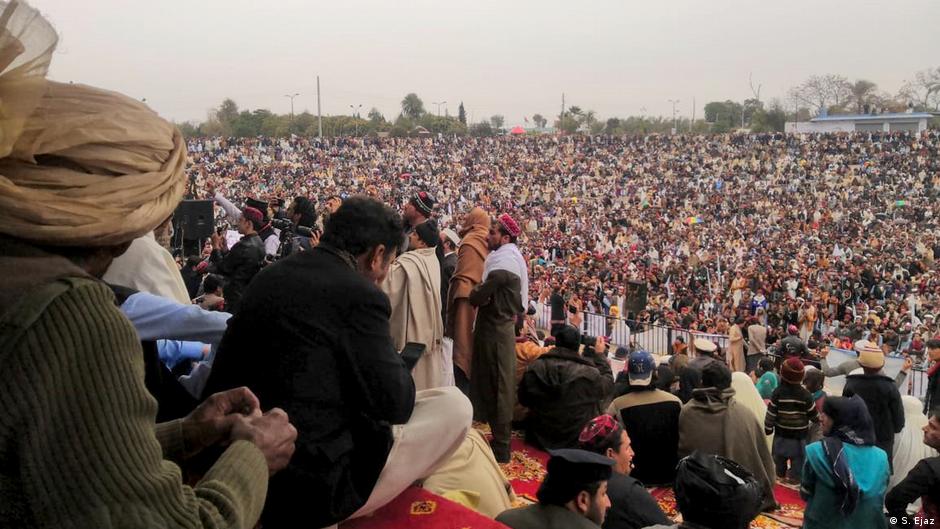A few weeks ago, former police officer Rao Anwar spoke to a leading Pakistani media channel discussing his stance on the killing of Naquibullah Mehsud. A budding model from the ex-FATA region, Naqeebullah’s extrajudicial killing galvanized the Pashtun community and institutionalised its collective efforts into the Pashtun Tahaffuz Movement (PTM) under Manzoor Pashteen’s leadership. He was declared a terrorist by the Karachi Police as the operation was led by Senior Superintendent Rao Anwar. The matter was investigated under direct supervision of the Supreme Court of Pakistan.
The Sindh government had ordered IG Sindh to form an inquiry committee. After all investigations, Naqeebullah Mehsud was found innocent. Anwar’s infamy was long known in Karachi due to the nexus between big property interests, mafia and the police. It is also presumed that Rao Anwar was merely addressing the security concerns that emerged in the aftermath of mass displacements that took place after military operations in the FATA region. Anwar is accused of killing over 400 people in allegedly fake police encounters. Over the few years, the unrest in FATA has resulted in securitization of the Pashtun identity and stereotyped the tribals as terrorists. The process had begun since the time of General Pervez Musharraf and continued by the security establishment’s media influence campaigns.
There is a substantial Pashtun population in Karachi, naturally making it vulnerable to suspicion by the authorities and the city witnessed regular incidents of abductions of Pashtun youth. On January 13, 2018, SSP Rao Anwar of Karachi Police Malir told the media in a press conference that members of a banned terrorist outfit were killed in a police encounter, including one Naqeebullah Mehsud and three other ‘terrorists’. He claimed to have recovered large quantities of arms and ammunition the alleged terrorists. Soon after the encounter, pictures of Naqeebullah Mehsud’s modelling days went viral, beginning with a strong backlash against the police on the social media. Soon after, protests erupted in several Pakistani cities, including Karachi, Peshawar and Quetta, against the killing of Naqeebullah Mehsud and others in a police encounter. A sit-in was called in Islamabad, the capital city of Pakistan. The sit-in was attended by most of Pakistan’s political parties, civil society and human rights activists and journalists. Regarding Naqeebullah Mehsud, Pashtun local media has come out with more accurate detail on the sequence of events on the fateful day. The fact is that he was abducted by Rao Anwar’s police along with his friends Hazrat Ali and Mohammad Qasim from a hotel in Sohrab Goth area of Karachi between the nights of January 2 and 3. While Ali and Qasim were released on Karachi Super Highway on January 6, Naqeeb Mehsud was detained. Later, on January 13, 2018, Anwar along with his team killed Naqeeb Mehsud and three others in a police encounter in the Shah Latif Town area. Of the three other people who were killed along with Naqeeb Mehsud, it was found out that the other two people were abducted from Bahawalpur a year and a half ago. Following the extrajudicial killing of Naqeebullah Mehsud, the Sindh government formed a Joint Investigation Team (JIT) comprising senior officials to investigate the whole incident. After a thorough investigation, the team reported that Naqeeb was abducted on the night between January 2 and 3 and was killed on January 13. The Inquiry Committee had recorded the statements of Hazrat Ali and Mohammad Qasim. SSP Investigations Abid Qaim Khani had submitted the report in the anti-terrorism court. That the case against Naqeeb Mehsud has not been proved in the past. All misleading cases against Naqeeb Mehsud are dropped. It was found that the mobile phone location of SSP Rao Anwar was traced back at the encounter site at the time of the killings. The report said that all the allegations levelled against Naqeeb and others in Rao Anwar’s press briefing were false and untrue. Sanaullah Abbasi, head of the government committee, admitted before the Mehsud Jirga that Naqeeb Mehsud was innocent and had been killed extrajudicially killed. During the trial, Anwar tried to flee the country several times but failed. According to a report, in the year 2017-18, 140 people were killed by the police in Karachi in police encounters. Also, it becomes impossible to investigate the larger interests and institutions that could be behind Naqeeb’s killing.
Pakistan’s Anti-terrorism Court ruled on January 24, 2019 that Naqeebullah Mehsud and three others killed along with him were innocent and their killing was extrajudicial. According to the court order, Rao Anwar was present along with other police officers at the time of the killings. The PTM, under the leadership of Manzoor, Ali Wazir, Mohsin Dawar, Zubair Shah Agha collectively staged large-scale protests against the involvement of state institutions in human rights abuses. Many PTM leaders took to the media to refute Rao Anwar’s claims. With all the proofs and investigative reports pointing towards the involvement of the police in the murder case, it is surprising that the former police officer was not only given space by a reputed media channel but also disrespected the long struggle of the Pashtun community for equal rights and dignity.

